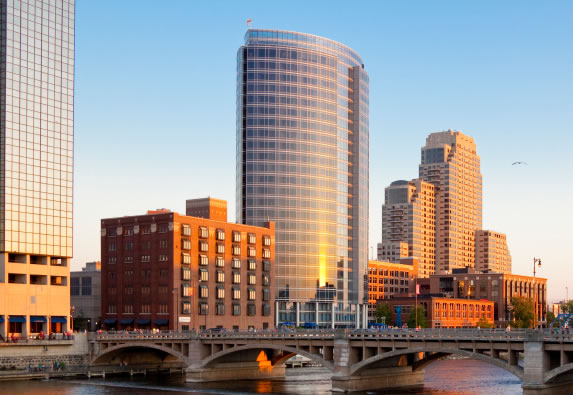The Intersection: Income Inequality in Michigan – Biggest Gap is Not In Metro Detroit
The rich make about 25 times more than the poor in the Grand Rapids area.

“What we see [in Grand Rapids] is I think what’s being seen around the country, which is poverty changing zip codes,” says Grand Rapids Urban League CEO Joe Jones.
The top one percent of the nation’s earners make more than 25 times that of the bottom 99 percent. That’s an average yearly income of about $1 million versus about $46,000, according to the Economic Policy Institute. The issue of income inequality in America has sparked major protests in recent years and has shaken up political campaigns. Bernie Sanders waged a serious challenge to Hillary Clinton’s bid for the Democratic nomination on a message of “political revolution” predicated on closing the income gap.
Here in Metro Detroit, we see the stark contrast between rich and poor all over the place. A new report from the Economic Policy Institute shows in one area in Michigan, the rich make about 25 times more than the poor.
But it’s not here in Southeast Michigan. It’s in Grand Rapids.
Grand Rapids Urban League President and CEO and Grand Rapids City Commissioner Joe Jones speaks with Detroit Today host Stephen Henderson about what’s happening in the state’s second-largest urban area. They’re also joined by Michigan League for Public Policy Vice President Karen Holcomb-Merrill, who speaks about what that income gap means for cities across Michigan.
Jones says, like Detroit, Grand Rapids is seeing, “substantial growth within the city, particularly in the urban core where you have a renaissance of sorts.” But he says that’s forcing low-income people out of their neighborhoods.
“What we see is I think what’s being seen around the country, which is poverty changing zip codes,” says Jones. He says people outside of the city sometimes paint too rosy a picture of what’s happening in Grand Rapids. “We have abject poverty here. We have pockets of poverty that equate to, or if not greater than, inner-city Detroit… I think the resources are here to create a greater sense of equity. But it’s going to take work.”
Holcomb-Merrill notes that one reason the report shows a larger income gap in Grand Rapids is simply because the top one-percent of earners in Grand Rapids is making more money than the top one-percent in Detroit.
“These are both cities in Michigan, and the widening gap isn’t an accident. And a lot of it is tied in to statewide policy and decisions that have been made,” says Holcomb-Merrill. She gives what she calls Michigan’s “regressive” tax structure as an example.
“As long as we have this huge gap of haves and haves-not, we continue to have here in Michigan a lot of folks that are not a part of the so-called economic recovery or not a part of what Governor Snyder calls ‘the comeback state.’ There are a lot of families and folks in both Detroit and Grand Rapids that are not experiencing that comeback,” she says.
To hear the full conversation, click on the audio player above.

